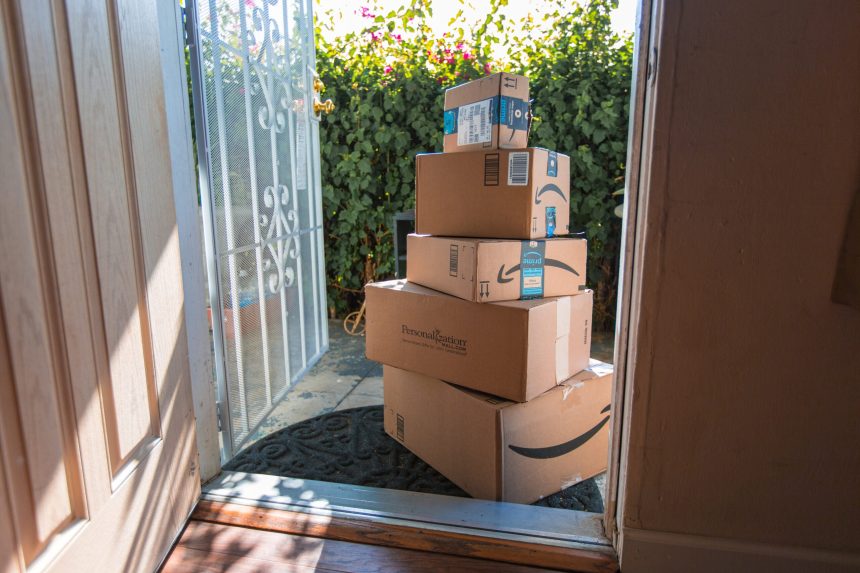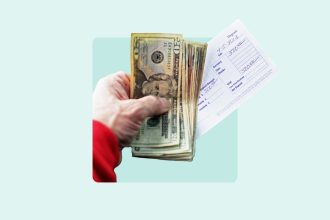Propaganda I’m not falling for: Prime Day.
Amazon’s biannual bonanza is back on Oct. 7-8. Cue: influencer hauls, magazine listicles and even friends inundating us with bargain FOMO.
There’s nothing wrong with getting a great price on a purchase you’d make anyway. But at its core, Prime Day is marketing — designed to convince you to buy stuff.
So before you add that cordless vacuum or 30-setting espresso machine to your cart, take a deep breath. You can approach Prime Day with eyes wide open, ready to make smart decisions with your money.
Here are three things Amazon doesn’t want you to know this Prime Day. Plus, learn how to make your budget more important than a corporation’s bottom line.
Prices are raised and lowered to look like discounts
If a deal seems too good to be true, it probably is.
An investigation by Popular Information — a self-styled independent accountability journalism site — found certain “discounted” items on Prime Day had conveniently seen a price bump just a couple months before. Historically, the items sold for a comparable price to the now-discount. The items were also listed for the same discounted price at other retailers.
“The pricing schemes are ridiculous,” says one Redditor. “One consumable item that I usually buy costs around $15. And here we are just before [Prime] Day and I noticed they bumped it up to $18, and most likely will sell it at like $13 on [Prime] Day as though that’s a big discount.”
Of course, this isn’t a new sales tactic. Walk into certain retailers like Best Buy or Old Navy, and you’ll see discount signs everywhere — the original list price is almost never what the items sell for. It’s meant to make you feel like you’re getting a good deal.
Amazon says if you see a discount, it’s compared to prices paid by recent customers and offered by competitors.
“We also work year-round to ensure the vast majority of our deals reflect the lowest price in the prior 30 days,” an Amazon spokesperson told me in an emailed statement.
Even if you do see a good price on Amazon, don’t fall for the false sense of urgency. You can use a tool like camelcamelcamel to track prices over time and jump on a bargain when you’re truly ready to make the purchase.
Reviews aren’t always real
Personally, I head straight to customer reviews when I’m considering whether to buy a product. A brand isn’t going to tell me if the shoe’s tread wears out quickly or a charging cable’s going to light on fire in my home — but other buyers will.
But in 2020, up to 47 percent of reviews on Amazon were fake, Capital One Shopping reports. Since then, Amazon says they proactively blocked more than 200 million suspected fake reviews and took legal action against over 90 fake review brokers in 2022.
As of 2024, the percentage of fake reviews had dropped to 20 percent, according to Capital One Shopping.
Still, that’s 1 in 5 reviews a person might’ve been paid to write.
“I lost all respect for [Amazon’s] reviews when I noticed that some of the reviews I had posted with negative feedback were removed and suddenly flagged for ‘harmful content,’ says Chris Horner, an information security consultant at Rebyc Security. ”One vendor even offered me my money back if I agreed to ‘update’ my review.”
PCMag.com says to look for red flags like improper grammar, several reviews in one day and generic or garbled reviewer names.
Spaving is a trap
Spending to save, or “spaving,” can feel like you’re getting a great deal. The promotion might include buy-two-get-one-free deals or free shipping when you spend a certain amount.
But even with a discount, you can still spend more than you planned.
“It’s easy to get caught up in the hype and stock up on things you don’t truly need,” says Bankrate expert Karen Bennett. She recommends asking yourself these questions before you buy:
- Will this cause me to take on debt?
- Do I already own something similar?
- Do I lack space for it in my home?
“If the answer is yes to any of these questions, it’s often best to steer clear,” Bennett says.
Some Prime Day shoppers have a strategy for how they shop sales without overspending. Kim Pike Walters, owner and financial coach at KPW Financial Coaching, LLC., told me she looks for deals on items she was already going to buy.
“For example, I have a couple gifts to buy from baby registries and I decided to wait until Prime Day to see if anything goes on sale,” Walters says.
5 places to shop instead of Amazon
If you’d like to spend your dollars elsewhere while still saving money, here are a few ideas.
- Credit card issuer shopping portals: Most major card issuers offer their version of a shopping portal where you can find deals and earn rewards on purchases. Make sure you visit the shopping portal first and follow the link to the retailer’s website. You also might be able to add a browser extension that automatically searches for coupons and applies your rewards.
- Cash back shopping websites and apps: Tools like Rakuten, TopCashback, Ibotta and Upside are free to use and offer cash back on purchases made through their website or app. You can also earn American Express Membership Rewards points through Rakuten.
- Wholesale clubs: Buying in bulk can help save both money and packaging waste. With membership prices ranging from $50 to $130 a year, you could spend less per item on everyday groceries and household goods. Just keep in mind that, when buying in bulk, it’s easy to end up with more than you need. Try sticking to a list — it helps you resist grabbing spontaneous items that’ll rack up your total at checkout.
- Thrift stores: I’m a fan of secondhand shopping because it keeps items out of landfills while limiting my ability to impulse buy. It might take a couple of visits to a thrift store or online reseller to find the right pair of shoes or piece of furniture you’re looking for. But when you find it, it’ll likely boast a more affordable price tag.
- Small businesses: If your goal is to step away from megacorporations and support the local economy, try shopping at small businesses. You might pay a few extra dollars for the product or shipping, but the quality and customer service you receive could make it worth your while.
The bottom line
Just because something’s on sale doesn’t mean you should buy it — unless you already planned to, no matter the price.
Robin Cashion, a recruiting consultant at HR Advisors, Inc., says she’s no longer a Prime member. But if she can’t find an item locally and it has a competitive price on Amazon, she’ll buy it.
“I added many items to my cart to watch their prices since May,” she told me during the July Prime Day. “All the items in my cart dropped in price to their lowest in 2 months.
“So YES, I bought all 3 items from Amazon and could not be happier.”
I’m not here to yuck anyone’s viral-Amazon-gadget-yum. Just remember that large, powerful companies put profits first. So if anyone’s going to look out for your money, it’s you.
(And me!)
Why we ask for feedback
Your feedback helps us improve our content and services. It takes less than a minute to
complete.
Your responses are anonymous and will only be used for improving our website.
Help us improve our content
Read the full article here
















